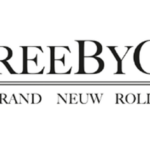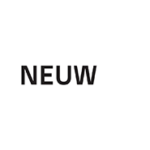Overstock ties up cash flow. Stockouts lead to lost sales. And a simultaneous convergence of the two represents a dramatic cost to your business and cannibalizes profitability.
Accurate demand forecasting is critical for maintaining the right inventory levels.
Without it, businesses risk holding too much stock that doesn’t sell or missing out on sales when demand spikes.
Relying on manual tracking or outdated spreadsheets leads to costly miscalculations.
The solution? Real-time demand capture.
By tracking sales as they happen, businesses can adjust forecasts instantly, helping wholesalers, agents, and retailers align supply with demand.
In this article, we’ll break down why inventory imbalances happen and the strategies businesses can use to maintain optimal stock levels and improve profitability.
Key Takeaways:
- Poor demand forecasting leads to overstock and stockouts, both of which impact cash flow and profitability.
- Real-time demand capture helps businesses track sales as they happen, ensuring stock levels align with actual demand.
- Automated purchase order coordination reduces manual errors, improves supplier communication, and prevents excess stock buildup.
- A data-driven forecasting system allows businesses to cut storage costs, avoid lost sales, and improve cash flow by making smarter purchasing decisions.
Table of Contents
Why Overstock & Stockouts Happen
Keeping the right amount of stock is a constant challenge. Too much inventory ties up capital and leads to markdowns.
Too little results in lost sales, and frustrated customers. Both issues stem from poor demand forecasting and inefficient inventory management.
Here’s why businesses struggle to maintain the right balance:
1. Inaccurate Demand Forecasting
Many businesses rely on historical sales data or gut instinct to predict future demand. But market trends, seasonality, and sudden spikes in interest can quickly make those estimates unreliable. Without real-time sales insights, businesses risk ordering too much or too little stock.
2. Manual & Outdated Inventory Tracking
Spreadsheets and traditional inventory systems lack automation and real-time updates. This creates blind spots in stock availability, leading to over-ordering or missed restocking opportunities.
3. Supply Chain Disruptions
Unpredictable delays from manufacturers, shipping issues, or material shortages throw off inventory planning. Without an agile forecasting system, businesses are left reacting to problems instead of anticipating them.
4. Poor Coordination Between Wholesalers, Agents & Retailers
When retailers don’t have visibility into supplier stock levels, they place inaccurate or late orders. Wholesalers without automated demand tracking may produce or store more stock than needed. A lack of real-time communication leads to inefficiencies across the supply chain.
5. Over-Reliance on Pre-Orders
While pre-orders help plan stock levels in advance, they don’t account for shifting demand. Businesses that rely solely on pre-book orders risk overproducing or being unable to restock when demand changes.
The Cost of Overstock & Stockouts
When inventory isn’t managed effectively, businesses lose revenue, increase costs, and weaken supply chain relationships. Overstock leads to excess capital investment, while stockouts result in missed sales opportunities and customer dissatisfaction. The table below breaks down the real impact of both:
| Cost of Overstock | Cost of Stockouts |
| ❌Tied-Up Capital – Excess stock locks up money that could be invested elsewhere, limiting cash flow and growth. ❌ Storage & Warehousing Fees – More stock means higher storage costs, especially for businesses relying on 3PL partners. ❌ Markdowns & Discounting – Unsold products force businesses to slash prices, reducing profit margins and damaging brand integrity. ❌ Obsolete Inventory – Seasonal trends shift quickly. Overstocked items risk becoming unsellable or outdated. | ❌ Lost Sales & Customers – When products aren’t available, buyers go elsewhere, often to competitors. ❌ Damaged Brand Reputation – Repeated stockouts create frustration, leading to negative experiences and lost trust. ❌ Rush Orders & Emergency Shipping Costs – Businesses forced to expedite restocks face higher supplier and freight charges. ❌ Retailer & Supplier Friction – If a supplier consistently fails to deliver, retailers lose confidence and may switch providers. |
Without real-time demand capture, businesses risk constantly over-correcting—either overproducing and holding excess stock or under-ordering and losing sales. The key to preventing this cycle is smarter demand forecasting, which we’ll explore in the next section.
How Real-Time Demand Capture Can Reduce Overstock Inventory & Stockouts
Traditional inventory forecasting relies on historical data, seasonal trends, and manual tracking.
While these methods provide some guidance, they lack the flexibility to respond to real-time changes in demand. This is where real-time demand capture makes a difference.
By tracking sales as they happen, businesses can adjust forecasts dynamically, reducing the risk of overstock and stockouts. Here’s how real-time demand capture improves inventory management:
1. Instant Sales Visibility
Instead of waiting for end-of-month reports, businesses get immediate insights into sales trends. This allows wholesalers, agents, and retailers to make data-driven decisions on stock levels before shortages or excess inventory become an issue.
2. Dynamic Forecast Adjustments
Market demand is rarely static. With real-time data, businesses can adjust orders on the fly, ensuring they stock what’s selling now rather than what was predicted months ago.
3. Proactive Inventory Planning
Automated demand capture helps anticipate supply needs instead of reacting to them. This is critical for businesses managing:
- Seasonal fluctuations, such as peak sales periods
- Sudden demand surges, such as viral products
- Supplier delays, such as shipping disruptions
4. Reduced Manual Work and Errors
Manual tracking is prone to delays, inaccuracies, and human error. A real-time demand capture system eliminates guesswork, ensuring that stock levels reflect actual sales activity.
5. Seamless Coordination Across Supply Chains
Wholesalers, agents, and retailers operate as part of a connected ecosystem. When one part of the supply chain lacks visibility, the entire system suffers. Real-time demand capture ensures:
- Retailers order based on current availability
- Wholesalers forecast production needs accurately
- Agents communicate up-to-date stock levels
Businesses that leverage automated demand tracking gain a competitive edge. They avoid costly stock issues, improve cash flow, and respond faster to market demands.
How to Prevent Overstock & Stockouts with Smarter Demand Capture
Inventory imbalances happen when businesses lack real-time insights, rely on outdated forecasting methods, or struggle with supply chain disruptions.
Brandscope’s demand capture and forecasting software eliminates these challenges by providing live sales data, automated purchase order coordination, and intelligent forecasting tools.
By integrating automation with real-time insights, businesses can reduce excess stock, prevent stockouts, and improve overall efficiency.
1. Forecast Demand with Real-Time Data
Predicting demand using historical sales data alone leads to inaccurate forecasts and stock misalignment. Brandscope captures demand as it happens, allowing businesses to:
- Adjust forecasts dynamically based on actual sales trends
- Identify fast-moving and slow-moving products in real-time
- Reduce guesswork and prevent costly miscalculations
Unlike static forecasting tools, Brandscope tracks demand as orders are placed, ensuring businesses always have an up-to-date view of stock needs.
2. Automate Purchase Order Coordination
Managing purchase orders manually leads to delays, over-ordering, or stock shortages. With Brandscope’s automated PO coordination, businesses can:
- Align stock levels with future delivery months, ensuring replenishment is planned in advance
- Reduce storage costs by only ordering what’s necessary
- Improve supplier communication with real-time order notifications
As orders are placed for future months, Brandscope notifies relevant departments, allowing for proactive supply chain adjustments instead of last-minute corrections.
3. Improve Supply Chain Communication
Lack of visibility across supply chains results in misaligned orders, late restocking, and inventory imbalances. With intelligent messaging and automated stock alerts, Brandscope ensures:
- Buyers receive real-time updates on product availability
- Retailers and agents know when to place orders based on stock levels
- Supply chain teams are instantly informed of demand changes
Unlike traditional inventory systems, Brandscope allows businesses to customise order categories (e.g., Forecast, Backorder) and add messages that guide buyers, ensuring smoother inventory flow.
4. Manage Supply Chain Disruptions Efficiently
Sudden supply chain disruptions can derail inventory planning, causing stockouts or surplus inventory. Businesses using Brandscope’s demand capture tools can:
- Adjust stock allocations dynamically based on live supply chain updates
- Reduce reliance on rigid pre-book orders that don’t reflect real demand
- Manage backorders more effectively by anticipating shortages in advance
By automating future delivery months and integrating live demand data, Brandscope helps businesses stay flexible, even in unpredictable supply chain conditions.
How Smarter Demand Capture Improves Business Performance
With Brandscope’s automation and real-time forecasting, businesses can:
- Reduce storage costs by eliminating unnecessary stock buildup
- Prevent lost sales by keeping high-demand products available
- Improve cash flow by ensuring stock levels match actual demand
- Strengthen supplier and retailer relationships through better coordination
By eliminating inventory inefficiencies and automating forecasting, Brandscope gives businesses a competitive edge—helping them sell smarter, reduce waste, and improve profitability.
Book a Demo Today
Managing inventory effectively is one of the biggest challenges in wholesale. Overstock ties up cash flow, while stockouts lead to missed sales and frustrated buyers. The right demand forecasting system ensures you stay ahead of demand shifts, keeping products available without unnecessary stock buildup.
Our demand capture and forecasting software simplifies inventory management by automating purchase orders, tracking sales in real-time, and providing accurate forecasting insights. This means fewer stock issues, stronger supplier-retailer relationships, and higher sales. Right stock, right time… all the time.
That’s just one of the many features our B2B Wholesale Platform offers to help brands, agents, and retailers sell smarter, reduce costs, and expand distribution.









